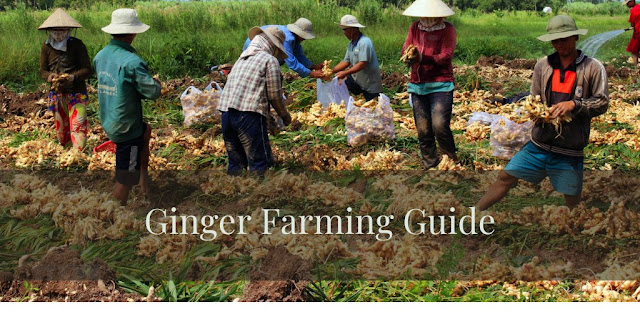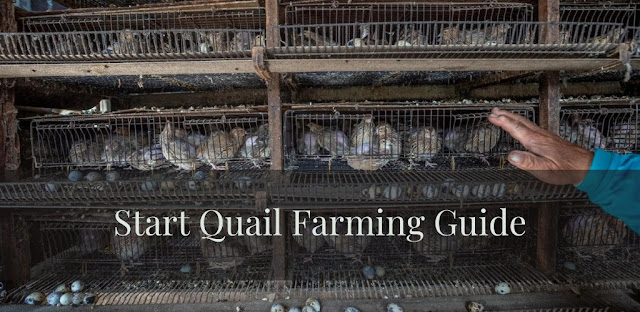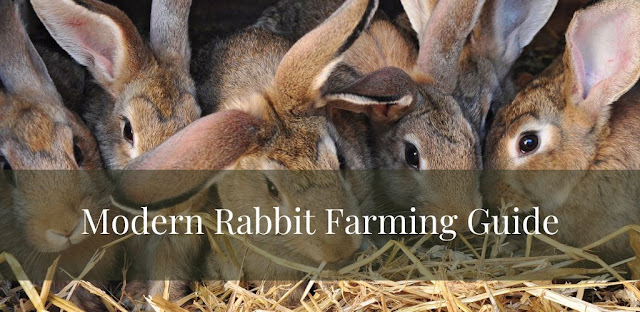Ginger Cultivation Guide : How to Plant Method & Analysis of Production in Ginger Farming
Ginger (Zingiber officinale Rosc.) is an annual herbaceous plant that is usually grown as an annual for its rhizomes. It is a valuable commercial plant and is widely used in food, beverage, confectionery and medicine.
Ginger is marketed in various forms such as raw ginger, dried ginger, ginger powder, ginger oil, ginger oleoresin, ginger beer, ginger candy, ginger beer, brined ginger, ginger wine, ginger pumpkin, ginger flakes, etc.
Ginger farming guide will help increase farmers' understanding of how to keep their farms free from viruses and disease. Emphasis should be on continuous efforts to reduce disease incidence to a minimum and protect plants for as long as possible from infection.
Likewise, information on disease-affected areas and infection rates including management strategies will help farmers make informed decisions regarding agricultural investment and sustainability of ginger cultivation in their area.
Planting Ginger
The rhizome of the seed must be carefully preserved to be free from pests and diseases collected from its original cultivated form must be used for planting. Seed rhizomes can be treated with a fungicide before sowing. Seed rate varies from 500-2500kg/ha.
Land Preparation And Planting
Proper plowing and raking is important in ginger cultivation as it encourages breeding of ginger roots for maximum exploitation of nutrients and soil moisture.
Cultural Practice
Ginger bed mulch with green leaves improves seed rhizome germination and addition of organic matter to the soil and also conserves moisture during the latter part of the growing season. The first mulch should be done with green leaves at 10-12t/ha at the time of planting. This should be repeated at 5t/ha at 3 months after planting.
This helps to moderate the soil temperature which needs to be maintained at 28-320c for the first three months after planting for good rhizome growth. Mulch should be done up to a thickness of 5cm with a durable mulch material.
Soil Fertility Management
Organic fertilizers such as green manure, compost wood ash or manure should be applied to restore the nutrients removed from the soil by plants and increase the binding capacity of plants to water and nutrients and increase the holding capacity of water and soil nutrients.
The amount of fertilizer required for a particular crop should depend on the initial fertility status of the soil. Fertilizers are best applied by broad casting in two applicants. 300kg NPK 15:15:15 recommended per hectare of ginger, applied in split applications, half at planting and half at 4-6 weeks after planting.
Farmyard manure or compost at 5-6 t/ha can also be used as a base dose at the time of planting.
Ginger Cultivation Guide
Weed Control
Uncontrolled weed growth in ginger plots can reduce rhizome yield up to 76% compared to weeded plots. The critical period for eradicating weeds in ginger is 8-16 weeks after planting. This means the crop should be free from serious weed competition during this period.
Manual weeding is done 4-6 weeks after planting and then roughing. Weed growth after 20 weeks of planting had no significant effect on rhizome yield.
Pests and Diseases
Ginger diseases and pests are rare if ginger is grown in fertile soil. However, high relative humidity and low soil fertility predispose to leaf spot disease which at an advanced stage can tear the leaves and eventually lead to premature plant death. To prevent disease, choose fertile soil and provide a balanced fertilizer, planting early and mulching sufficiently to prevent soil splashing on the leaves.
Other diseases such as Fusarum, yellow rot and soft rot are rare. Almost no pests are known to be of economic importance to ginger. Although the root knot nematrate (Meloidogyne incognita) is said to be a common pest of ginger.
Harvest And Yield
The plants are ready to harvest in about eight to ten months depending on the maturity of the variety. Once fully ripe, the leaves turn yellow and begin to gradually dry out, the clump is carefully removed with a shovel or digging fork and the rhizome is separated from the dried leaves, roots and adhering soil.
The average yield of fresh ginger per hectare varies with varieties from 15 to 25 tonnes.
Ginger Storage
After setting aside the planting material for the next session, the ginger rhizomes are split and dried immediately after harvest. Small amounts of ginger can be stored in closed holes, or in baskets covered with sawdust. Large quantities can be well stored in piles in the shade of trees and covered with dry grass, or in a well-ventilated hut.
The rhizomes should be periodically sorted to remove rotten ones. Seed rhizomes can also be stored in holes dug in the ground under the shade of a tree as long as there is no chance of water getting into the hole.

.jpg)


Komentar
Posting Komentar